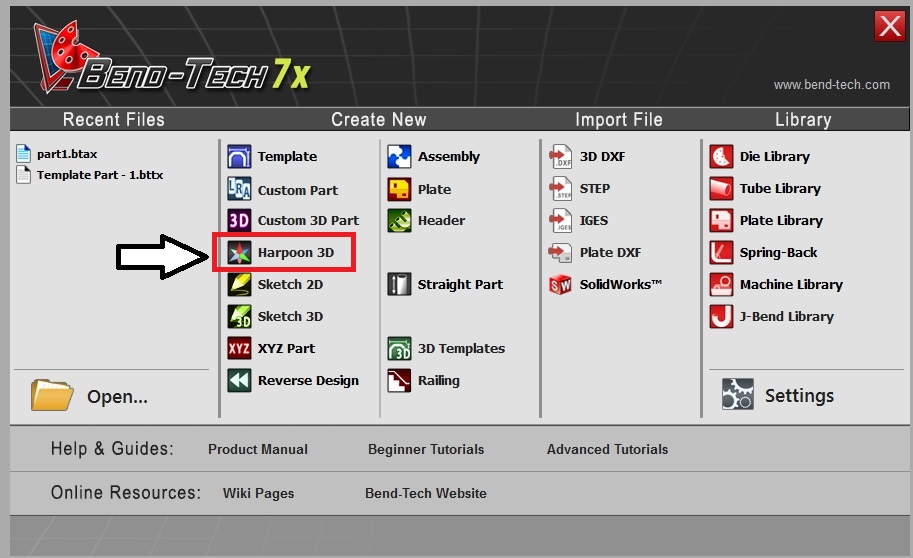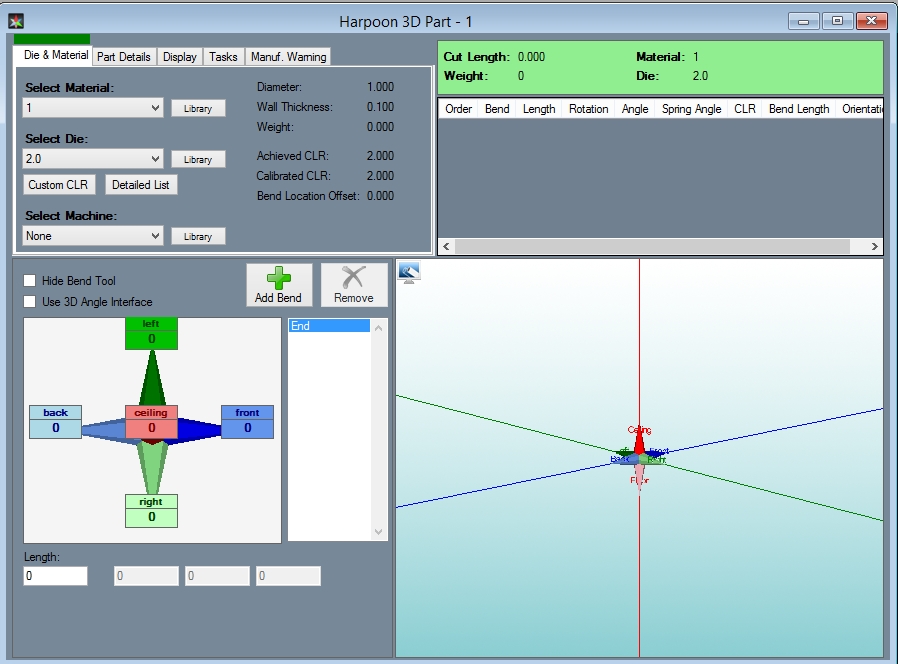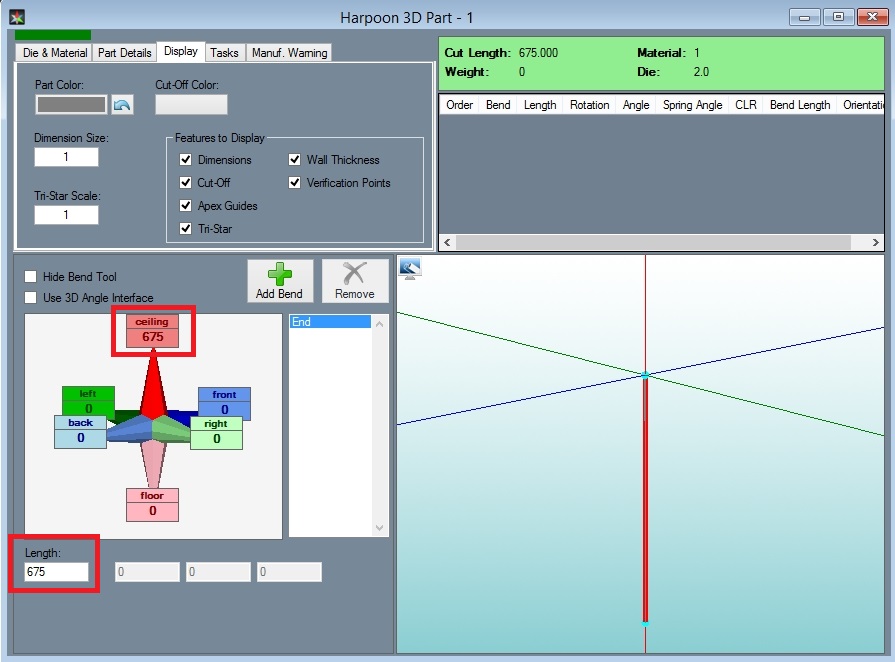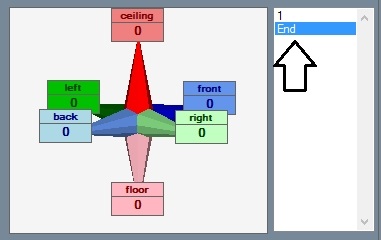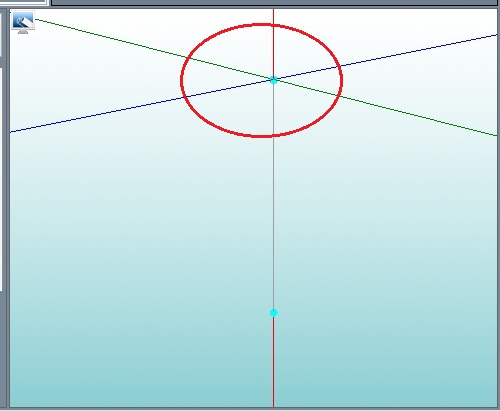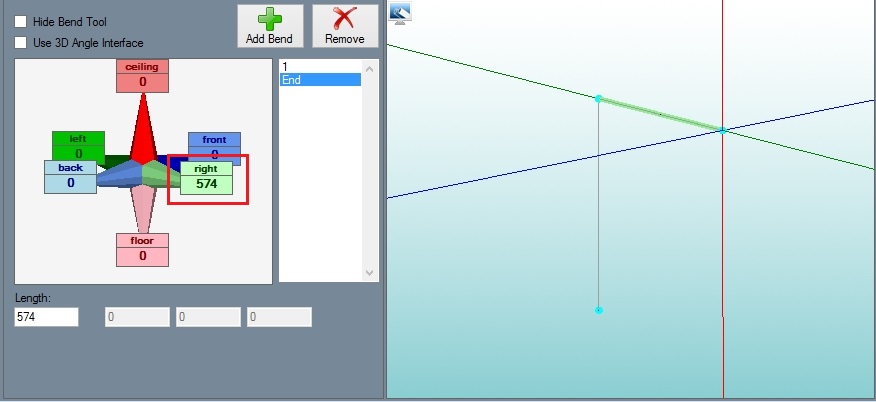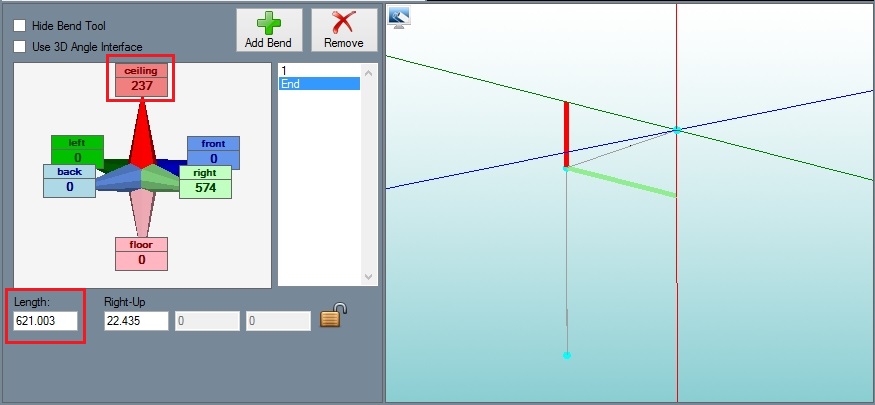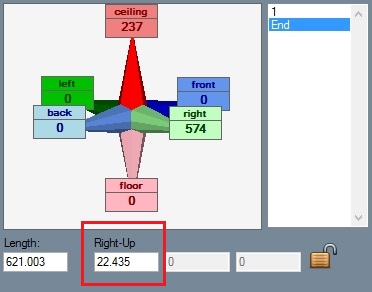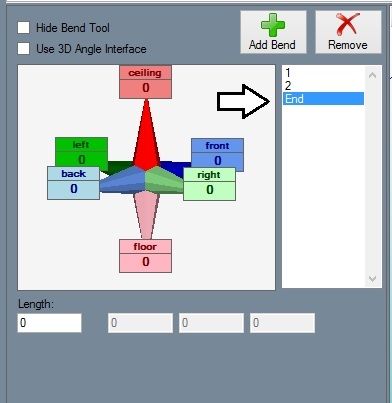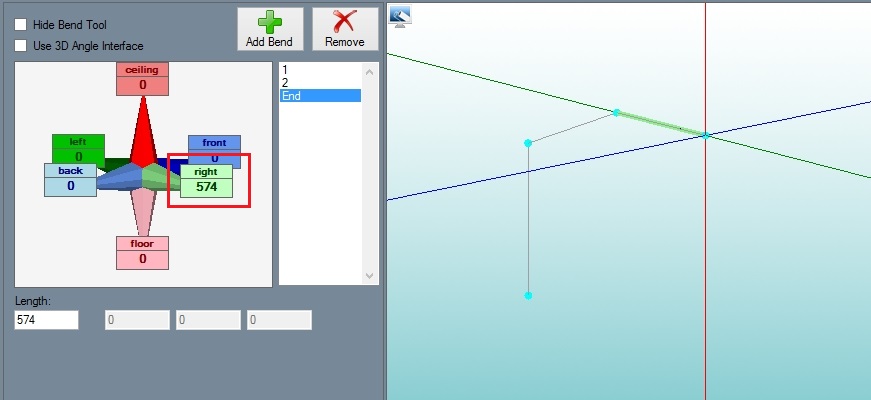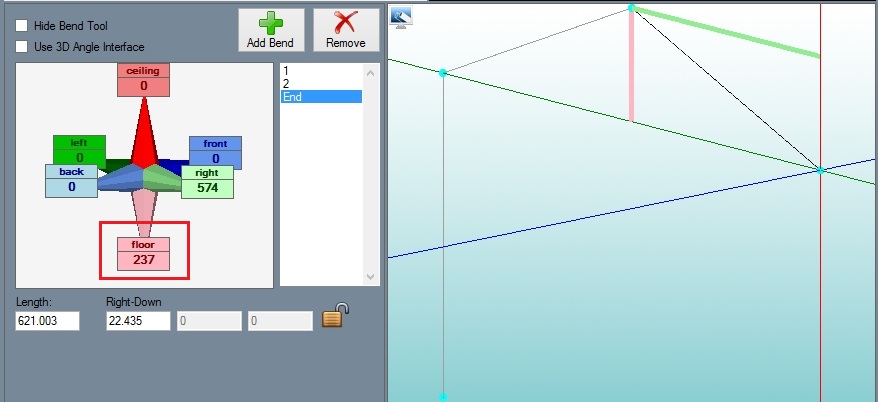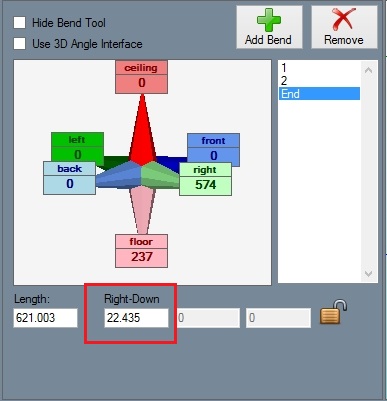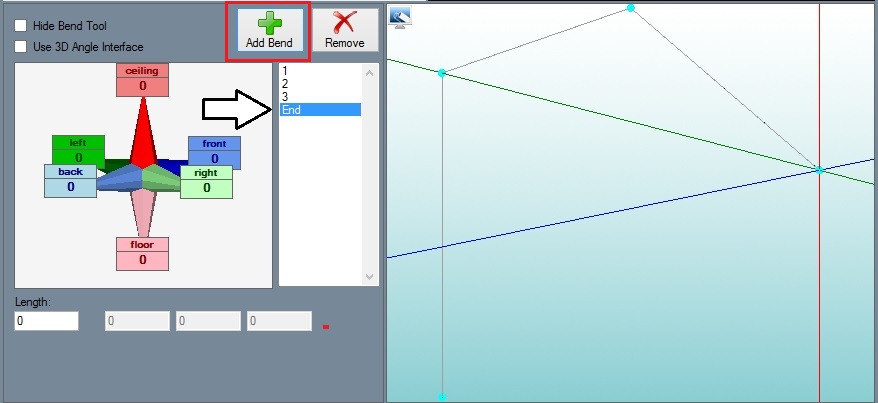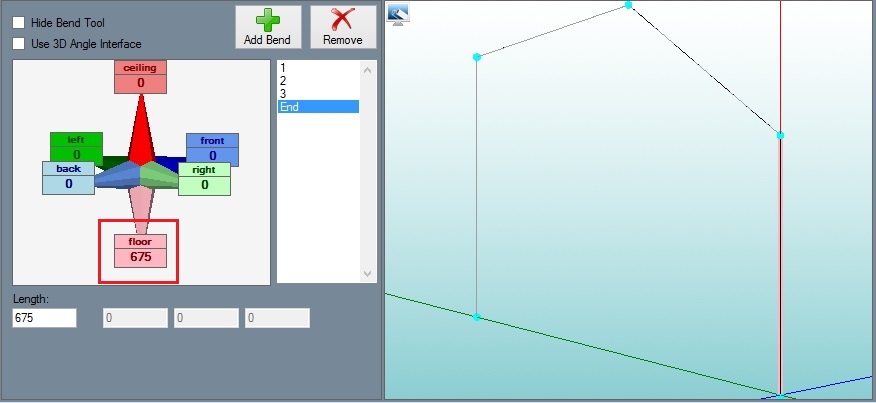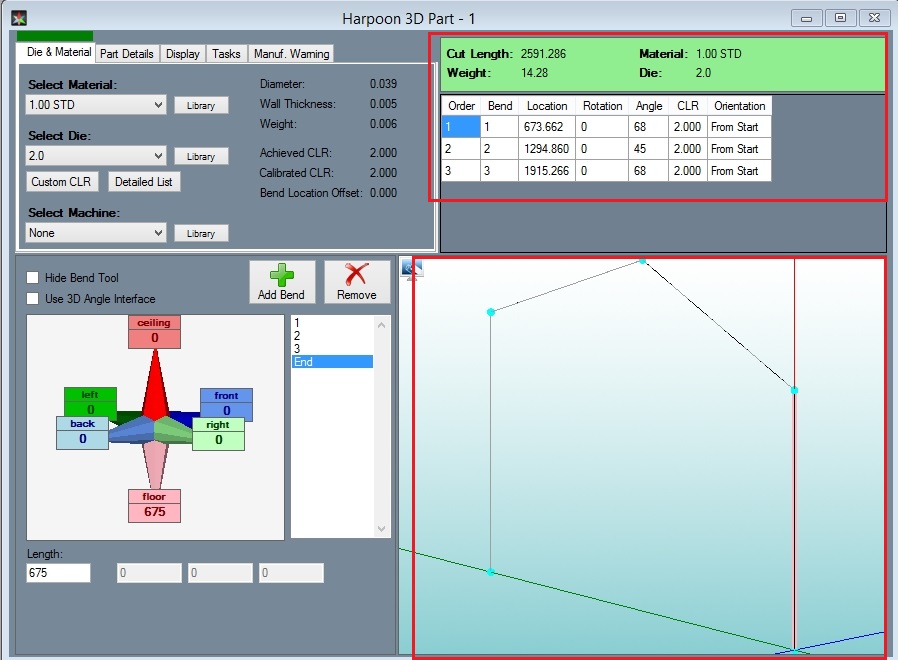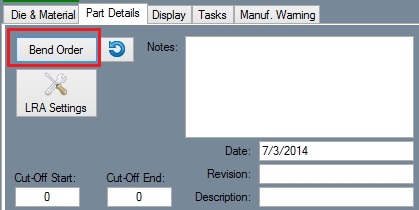Difference between revisions of "Harpoon 3D Tutorial"
(Created page with " Introduction File:Harptut4.jpg This tutorial will step through the process of designing a part (Shown to the right) in the harpoon part designer interface. Whi...") |
|||
| Line 55: | Line 55: | ||
Step 4 | Step 4 | ||
| − | + | Now the first length of the part will be created. To do so, type 675 into the Ceiling entry field. Watch the red entry field or the length field to the left to see how long the part length is. | |
| − | |||
| − | |||
| − | |||
| − | |||
| − | |||
| − | |||
| − | |||
| − | Now the first length of the part will be created. To do so, | ||
| Line 84: | Line 76: | ||
| − | In the bend list below, there will be a 1 and | + | In the bend list below, there will be a 1 and an end listed. The 1 represents the length that was added in step 5 and the end represents the bend/length that will be created in this step. |
[[File:Harptut9.jpg]] | [[File:Harptut9.jpg]] | ||
| Line 94: | Line 86: | ||
| − | First, click | + | First, click light green harpoon point and type in 574 mm. Watch the part dimension, light green entry field, or the length field to get the length measurement. (Alternatives: Type the length into the entry field, click the harpoon point and directly type in the length.) |
[[File:Harptut11.jpg]] | [[File:Harptut11.jpg]] | ||
| Line 100: | Line 92: | ||
| − | Next, the angle of the bend will be adjusted. Click | + | Next, the angle of the bend will be adjusted. Click the red harpoon point and enter 237 and the total length of this length is roughly 621 mm. (Alternatives: Type the value (237) into the entry field or click the harpoon point and directly type in the value.) |
[[File:Harptut12.jpg]] | [[File:Harptut12.jpg]] | ||
| Line 122: | Line 114: | ||
| − | Click | + | Click the light green harpoon point and enter 574 mm. (Alternatives: Type the value (574) into the entry field, click the harpoon point and directly type in the value.) |
[[File:Harptut16.jpg]] | [[File:Harptut16.jpg]] | ||
| Line 128: | Line 120: | ||
| − | Now, to adjust the angle of the bend, click | + | Now, to adjust the angle of the bend, click the pink harpoon point and enter 237 mm. (Alternatives: Type the value (237) into the entry field or click the harpoon point and directly type in the value.) This length will now measure 621 mm in the length field. |
[[File:Harptut17.jpg]] | [[File:Harptut17.jpg]] | ||
| Line 134: | Line 126: | ||
| − | After the pink harpoon point is | + | After the pink harpoon point is filled, notice that a new field will have appeared below the entry fields area, as shown below. This is the angle field. The icon next to this field will show which axis the angle is along. In this case, the value here represents the angle along the pink and light green axis. The angle should be around 22.4. |
[[File:Harptut19.jpg]] | [[File:Harptut19.jpg]] | ||
| Line 153: | Line 145: | ||
| − | Click | + | Click the pink harpoon point and enter 675 mm. (Alternatives: Type the length (675) into the entry field, click the harpoon point and directly type in the length.) |
[[File:Harptut20.jpg]] | [[File:Harptut20.jpg]] | ||
Revision as of 10:18, 3 July 2014
Introduction
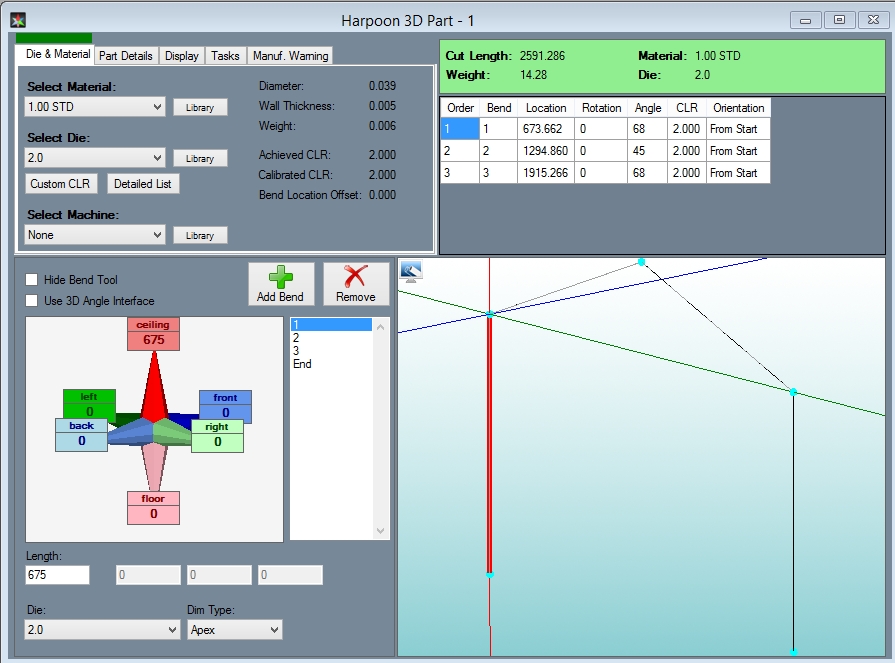 This tutorial will step through the process of designing a part (Shown to the right) in the harpoon part designer interface.
This tutorial will step through the process of designing a part (Shown to the right) in the harpoon part designer interface.
While designing a part in the harpoon designer, the die and material are chosen and the part is designed by clicking and dragging the part from the harpoon tool and/or entering values into the entry fields.
Note: This tutorial will use millimeters as the measurement units.
Tutorial Step 1
First, a new harpoon part design needs to be started. On the start up page, click the harpoon designer button. Harpoonicon.png
Note: Depending on the version of software currently in use, fewer designer buttons may be included on the start up page.
Step 2
Now a new harpoon part designer window will open. This is where the part will be designed.
Step 3
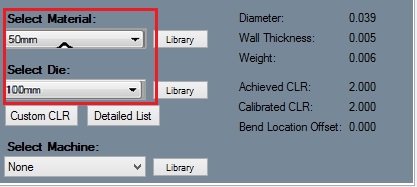 First of all, the die and material need to to be chosen. The die and material menus are located in the upper left corner of the designer window.
First of all, the die and material need to to be chosen. The die and material menus are located in the upper left corner of the designer window.
Choose a die by clicking the drop down menu next to the die icon. Select the 100mm die from the list, as shown in the image below. (Note: This die was made in the Die Library Tutorial. If this die is not shown in the die selection menu, please complete the die library tutorial before proceeding.)
Choose a material by clicking the drop down menu next to the material icon. Select the 50mm material from the list, as shown in the image below. (Note: This material was made in the Material Library Tutorial. If this material is not shown in the material selection menu, please complete the material library tutorial before proceeding.)
Step 4
Now the first length of the part will be created. To do so, type 675 into the Ceiling entry field. Watch the red entry field or the length field to the left to see how long the part length is.
Tip: While manually dragging the part length is convenient, it can be a bit tricky to get exact measurements. To define a part length you can also use any of these alternative methods:
1. Type the length into the entry field that matches the harpoon point (In this case, the red entry field).
2. Click the harpoon point (In this case, the red harpoon point) and directly type in the length using the keyboard.
Step 6
 Next, the first bend will be added to the part. Click the add bend button.
Next, the first bend will be added to the part. Click the add bend button. 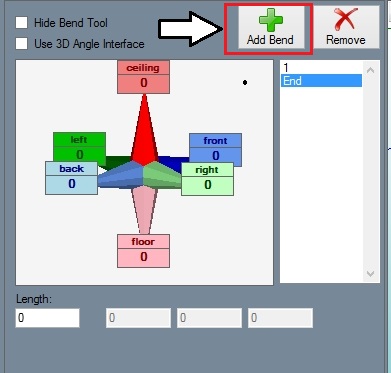
The add bend button is located near the upper left corner, as shown in the image to the right. Once this button is clicked, a bend will be added to the part.
In the bend list below, there will be a 1 and an end listed. The 1 represents the length that was added in step 5 and the end represents the bend/length that will be created in this step.
On the part model in the graphical display, the harpoon tool will be moved near the end of the part, as shown below.
First, click light green harpoon point and type in 574 mm. Watch the part dimension, light green entry field, or the length field to get the length measurement. (Alternatives: Type the length into the entry field, click the harpoon point and directly type in the length.)
Next, the angle of the bend will be adjusted. Click the red harpoon point and enter 237 and the total length of this length is roughly 621 mm. (Alternatives: Type the value (237) into the entry field or click the harpoon point and directly type in the value.)
After the red harpoon point is pulled, notice that a new field will have appeared below the entry fields area, as shown below. This is the angle field. The icon next to this field will show which axis the angle is along. In this case, the value here represents the angle along the red and light green axis. The angle should be around 22.4.
Step 7
 Now, the second bend will be added to the part. Click the add bend button. Addbend.png The add bend button is located near the upper left corner, as shown in the image to the right. Once this button is clicked, a bend will be added to the part.
Now, the second bend will be added to the part. Click the add bend button. Addbend.png The add bend button is located near the upper left corner, as shown in the image to the right. Once this button is clicked, a bend will be added to the part.
On the part model in the graphical display, the harpoon tool will be moved near the end of the part and another bend (3) will be added to the bend list, as shown below.
Click the light green harpoon point and enter 574 mm. (Alternatives: Type the value (574) into the entry field, click the harpoon point and directly type in the value.)
Now, to adjust the angle of the bend, click the pink harpoon point and enter 237 mm. (Alternatives: Type the value (237) into the entry field or click the harpoon point and directly type in the value.) This length will now measure 621 mm in the length field.
After the pink harpoon point is filled, notice that a new field will have appeared below the entry fields area, as shown below. This is the angle field. The icon next to this field will show which axis the angle is along. In this case, the value here represents the angle along the pink and light green axis. The angle should be around 22.4.
Step 8
 Next, the third bend will be added to the part. Click the add bend button.
Next, the third bend will be added to the part. Click the add bend button.  The add bend button is located near the upper left corner, as shown in the image to the right. Once this button is clicked, a bend will be added to the part.
The add bend button is located near the upper left corner, as shown in the image to the right. Once this button is clicked, a bend will be added to the part.
On the part model in the graphical display, the harpoon tool will be moved near the end of the part and another bend (4) will be added to the bend list, as shown below.
Click the pink harpoon point and enter 675 mm. (Alternatives: Type the length (675) into the entry field, click the harpoon point and directly type in the length.)
Step 9
Now that each bend and length is defined, the complete 3D part model will be shown in the graphical display to the right. The part's bend information will also be generated in the results table at the top of the window. See the image below.
Depending on the options chosen in the results/output format and results/output settings tabs in the program settings menu, the results table may look slightly different.
Step 10
The part is now complete!
The part design file can be saved by going up to the main tool bar and clicking the save option. Temptut13.png
The bend order can also be adjusted in the bend order menu.
The part setup sheet can also be printed by clicking the print option on the main tool bar. 
